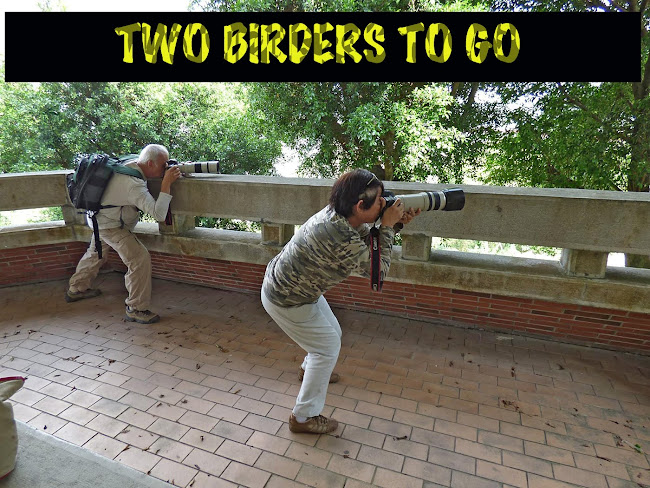I immediately proceeded to the eastern shore and scanned the lake with my binoculars. Nothing but Mallards, Western Grebes and hundreds of Coots. A pair each of Canada and White-fronted Geese were just waking up as I walked closer to the water's edge. A Killdeer scampered ahead of me. But no wintering ducks! I turned my attention to the land birds. There was a small puddle by the roadside where Yellow-rumps, American Goldfinches, Dark-eyed Juncos and an occasional Western Bluebird would take a drink.
At the easternmost point next to the parking area, a Great Blue Heron and a Snowy Egret were trying to overcome their frozen inertia. A Belted Kingfisher and an Osprey on the other hand, have begun their quest for an early morning meal.
I walked along the lakeside going west accompanied by skiterring Least Sandpipers. Around the bend, I finally saw some Redheads bathing! Further into the open, Western Grebes stretched their necks and legs while Ruddy Ducks slept. Four Eared Grebes went swimming by.
But still no Goldeneyes.
I decided to drive to the western side of the lake and I was turning into the main road, I was completely surprised to see a Roadrunner! I stopped the Jeep, flashe my emergency lights on, opened the window on my side and grabbed my camera gear. Fortunately, I decided to bring my big 500mm telephoto lens for this trip anticipating that the ducks would be at quite a distance offshore. Praying that the lens' Image Stability capabilities would work, as I was handholding the camera and trembling with excitement, I took a bunch of shots at the roadrunner. Eventually it took off and hid among the bushes.
I stopped by restroom # 8 to see if the Painted Redstart still inhabits the tree across. The black-and-red warbler has obviously gone to warmer climes for it was quiet as a cemetery there. There was however, a Merlin perched silently high up a pine tree.
I continued to the west side parking lot and hauled my gear to the lakeside. This time a Spotted Sandpiper came bobbing towards me, totally unmindful of my presence. Once again scanning the lake with my binoculars, I saw Lesser and Greater Scaups together offering excellent opportunities to compare one species from the other.
But still no Goldeneyes.
The beautiful morning soon turned into overcast skies and a few drops of rain forebode a wet afternoon.
I will have to "live another day" in my search for the Goldeneye. (Oh no, not another James Bond theme!)
















